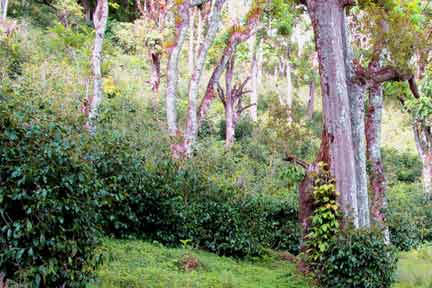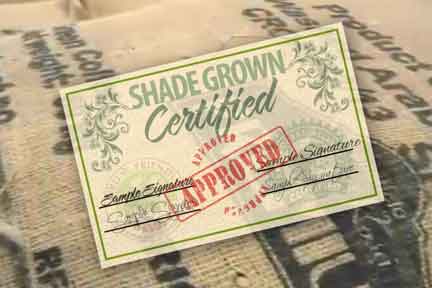for your reading pleasure
Find Me Coffee Blog
Green Week - Green Thumb Challenge
— Green Thumb Challenge
Today, we are addressing the Green Thumb Challenge. We farm thousands of acres and care for hundreds of thousands of trees. Having a green thumb is paramount.
Meet our lead Agronomist - Hunter Tedman
To do this, we use the most environmentally friendly farming practices, as well as inventing some of our own methods that are not only improving the environmental conditions on the farms, but the lives of the farmers. The most beneficial to both being shade grown coffee.

What is Shade Grown Coffee?
“Shade Grown Coffee” is a way of growing coffee in concert with nature. We plant our coffee trees in and among a forest canopy of native trees rather than on clear-cut land in full sun.
Quality Instead of Quantity
On a shade grown coffee farm, the yield on each tree is lower since there is not as much sun. However, the quality of the coffee is much better, and to us, that is what really matters.
Healthy for the Environment
Shade coffee farming (as opposed to clear cutting for full sun) creates healthy soil content, protects the environment for a myriad of animals and birds, fights global warming, and truly creates a better coffee bean.
Clear Cut “Full Sun” Farms
Coffee cultivation dates back hundreds of years in the area, during the mid-1800s, large tracts of foothill forests of southern Mexico and Central America were divided into estates and planted with coffee. Coffee-growing regions expanded worldwide through the 1980s, often as sun coffee with limited shade and higher chemical inputs as compared with traditional methods.
Rogers coffee farms do not follow these clear cutting trends.

What Can You Do? (Taken from greeneducationfoundation.org.)
1. Adopt A Plant
Bring some color and fresh air into your classroom by adopting a plant! GEF even provides a certificate of adoption so you can name your plant! Learn More!
2. Plant With A Purpose
This campaign provides participants with the resources to plant gardens with the goal of aiding hunger-relief efforts. Donate your harvest to help meet the need of local food banks! Learn More!
3. Volunteer
Any size garden makes a difference! Volunteer your time at a school or with a youth group to get involved and help kids connect with nature. Learn More!
Share This Blog Entry: